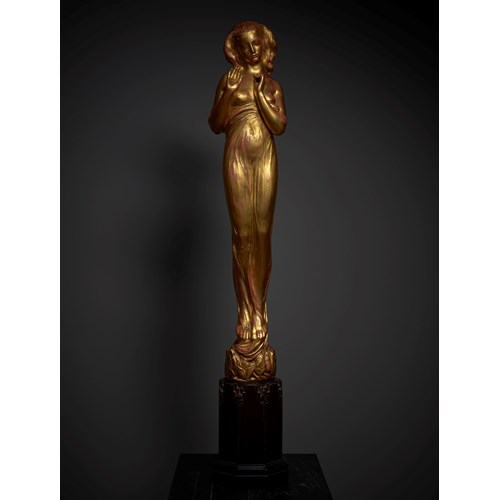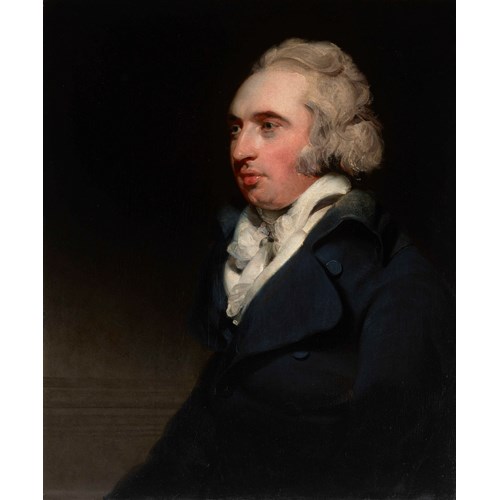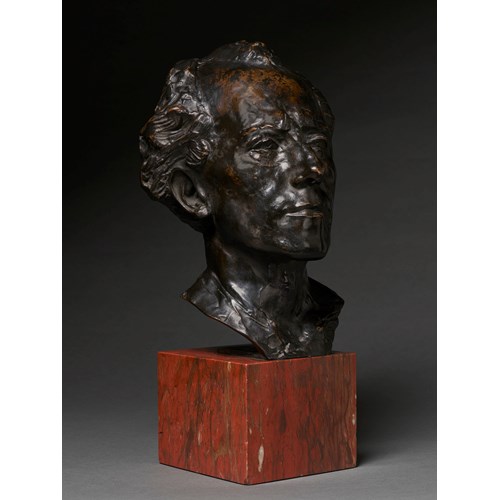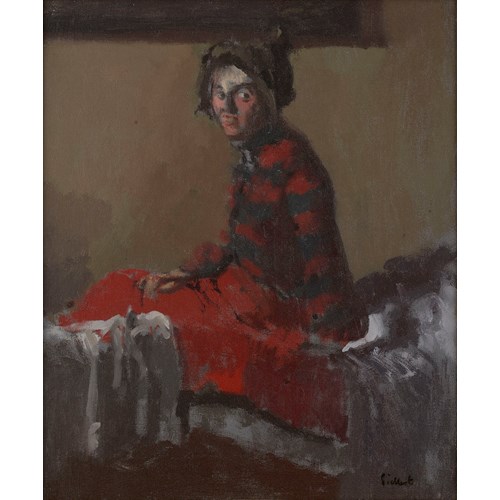Marketplace
The Assumption & Coronation of the Virgin
Nottingham, England
The Assumption & Coronation of the Virgin
Date c.1480
Medium Alabaster
Dimension 52 x 25 cm (20¹/₂ x 9⁷/₈ inches)
The Assumption of the Virgin, body and soul, into heaven, has traditionally been the belief of the Church, even though it was not formally defined as dogma until 1950 by Pope Pius XII. Her Assumption and Coronation, in this panel, via the angels and the Trinity, is a symbolic and colourful demonstration of the Chruch’s belief in the appreciation and reward by God of the part played by Mary in the Incarnation and Redemption.
The Virgin stands bareheaded in a mandorla, hands apart uplifted in prayer. She wears a close fitting gown, fastened elaborately with a tasselled cord, the two strands of which are held together with a toggle, and looped over the front. This was a form of fastening which was fashionable in the 15th century and can be seen on alabaster effigies of the period. She is flanked by angels and crowned by the Trinity above her. At her feet, is the kneeling figure of St Thomas, clasping the Virgin’s belt. The Virgin dropped her belt during the Assumption as a tangible demonstration to Thomas’s doubting of the truth of the Assumption. The Golden Legend describes the event:
(Mary) ‘was assumed into the heavenly bridal chamber, a great multitude of angels keeping her company. Thomas, however, was absent, and when he came back refused to believe. Then suddenly the girdle that had encircled her body fell intact into his hands, and he realised that the Blessed Virgin had really been assumed body and soul’
Some one hundred panels of the Assumption are extant, for it was typically the final panel (together with the Coronation) on altarpieces of the Life of the Virgin. This example is exhibited by F.W. Cheetham in Alabaster Images of Medieval England, on page 99, figure 96 and was shown in the June 1957 issue of The Connoisseur. A remarkably similar example can also be found at the Musées Royaux d’Art et d’Histoire in Brussels, Belgium. The panel is beautifully carved in high relief and features a rich patination with traces of the original polychrome and gilt remaining.
The Virgin stands bareheaded in a mandorla, hands apart uplifted in prayer. She wears a close fitting gown, fastened elaborately with a tasselled cord, the two strands of which are held together with a toggle, and looped over the front. This was a form of fastening which was fashionable in the 15th century and can be seen on alabaster effigies of the period. She is flanked by angels and crowned by the Trinity above her. At her feet, is the kneeling figure of St Thomas, clasping the Virgin’s belt. The Virgin dropped her belt during the Assumption as a tangible demonstration to Thomas’s doubting of the truth of the Assumption. The Golden Legend describes the event:
(Mary) ‘was assumed into the heavenly bridal chamber, a great multitude of angels keeping her company. Thomas, however, was absent, and when he came back refused to believe. Then suddenly the girdle that had encircled her body fell intact into his hands, and he realised that the Blessed Virgin had really been assumed body and soul’
Some one hundred panels of the Assumption are extant, for it was typically the final panel (together with the Coronation) on altarpieces of the Life of the Virgin. This example is exhibited by F.W. Cheetham in Alabaster Images of Medieval England, on page 99, figure 96 and was shown in the June 1957 issue of The Connoisseur. A remarkably similar example can also be found at the Musées Royaux d’Art et d’Histoire in Brussels, Belgium. The panel is beautifully carved in high relief and features a rich patination with traces of the original polychrome and gilt remaining.
Date: c.1480
Medium: Alabaster
Dimension: 52 x 25 cm (20¹/₂ x 9⁷/₈ inches)
Provenance: Gandrup family collection, Portugal, c.1950-2024
Literature: Cheetham, F.W. Alabaster Images of Medieval England, Woodbridge, 2003.
Cheetham, F.W. The Alabaster Men: Sacred Images from Medieval England, Daniel Katz Gallery, 2001.
Ryan, W G, The Golden Legend, Princeton, 1993, Vol II.
Exhibition: The Connoisseur, June 1957, illustrated and advertised by S. W. Wolsey.
Plus d'œuvres d'art de la Galerie









